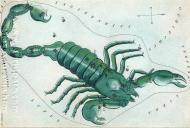
| Main page |
| Description |
| Parameters |
| Filters |
|
Grisms
|
|
Modes: Direct images Long-slit Spectropolarimetry Scanning Fabry-Perot IFU Multislit |
|
MANUALS |
|
PUBLICATIONS |
 Back to SAO web page |
|
Last update:28 Nov 2025 This page is designed by A.V. Moiseev moisav  sao.ru sao.ru
|
|
SCORPIO-2: Spectral Camera with Optical Reducer for Photometric and Interferometric Observations - 2 |
Integral field unit (IFU)
IFU inside SCORPIO-2 represents the lens array having 22x22 microlenses with sizes of 2 mm each combined with optical fibers. Similar scheme was realized by us previously in integral field spectrograph MPFS. Comparing with it, the IFU in SCORPIO-2 has two main merits:- Much higher quantum efficiency (6-13% in dependence on the used grism)
- Ability for the fast change of the observational mode thanks to the integrity inside the SCORPIO-2.
A plate scale of the resulting images with the IFU is 0.75"/lens, and the field of view is 16.5"x16.5".
In addition to the main lenslet, the IFU has 14 microlenses on the top and bottom sides of the main array, which used for observing the night sky spectra simultaneously with the target at the distance of ±3' away from the center. A set of available volume phase holographic grisms VPHG for SCORPIO-2 provides a spectral range of 4600-7300 A and the spectral resolution λ/δλ = 1040-2800 in the IFU mode. The detailed description of the IFU, observational technique, the obtained data and their reduction is given in the paper:
Afanasiev V.L., Egorov O.V., Perepelitsyn A.E., 2018, Astrophysical Bulletin, 2018, 73, 373 (Russian PDF).
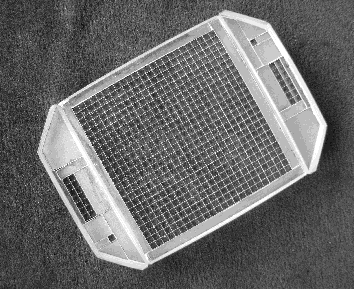 Photo of IFU lens raster |
|  Comparison of the quantum efficiency of IFU in SCORPIO-2 and of MPFS |
Optical scheme of IFU in SCORPIO-2
The IFU uses its own collimator (5-lenses apochromat, F=240 mm, F/6) that enters into the optical beam instead of the collimator used in the focal reducer. The lens raster uses the optical fibers made by our order by "FORC-Photonics". They reformats the array of microlenses into tho pseudoslits that projected by the collimator and camera to the detector plane. VPHG forms two sets of spectra. The work region of the spectra for each of the grisms is cutted by the narrow-band interference filter from a set for SCORPIO-2, that enters into the beam following the magnification lens.
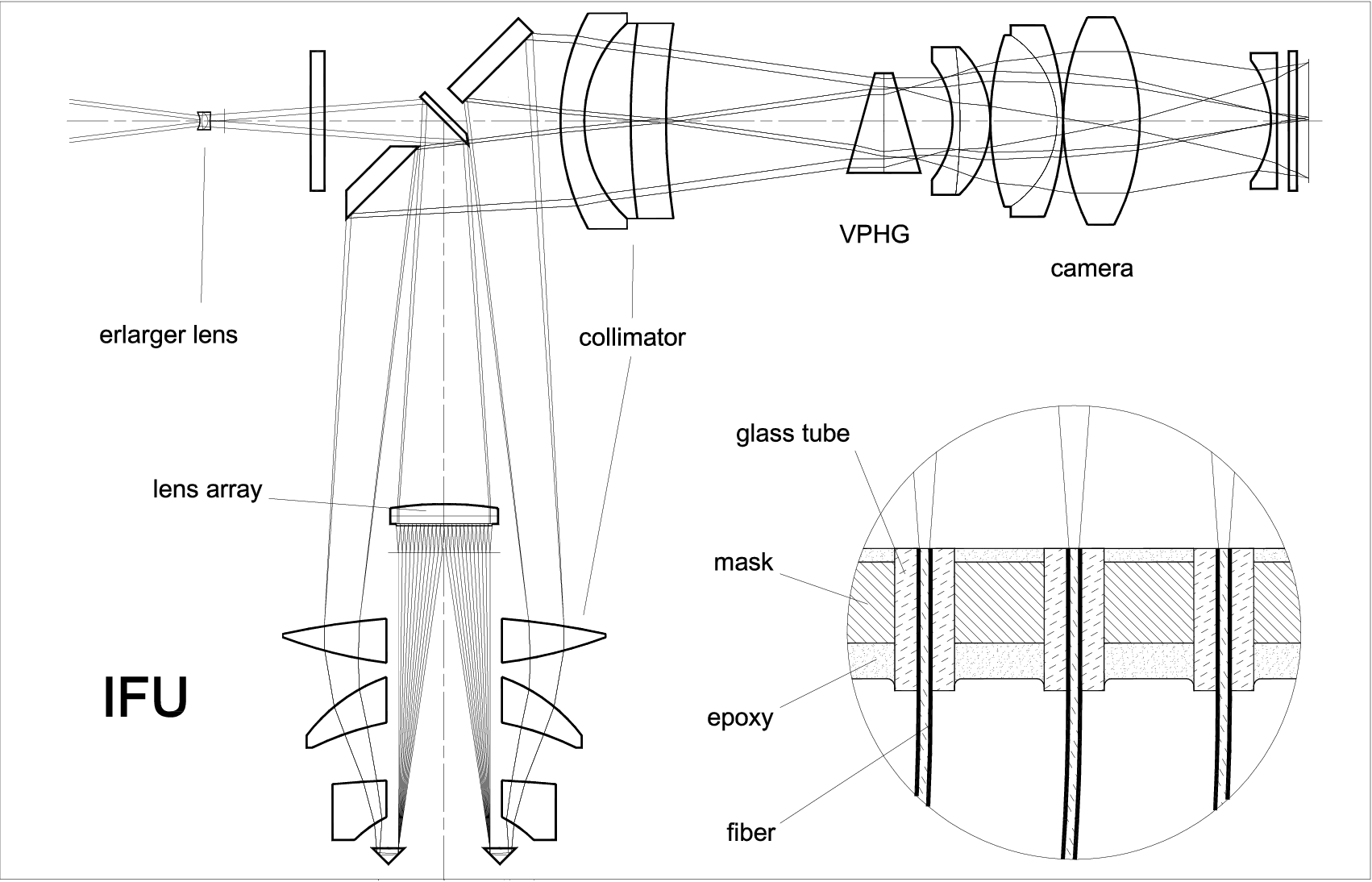
The optical scheme of the IFU in SCORPIO-2.

The optical scheme of the image formation on the lens raster.

The image of the spectrum of calibration source.
Data reduction
During the observations the following data set is obtained:
- BIAS frames
- Spectra of the uniform flat illuminating lamp (FLAT)
- Etalon spectrum (ETA), which obtained by the illuminating of the 12dots mask by the flat-field lamp. It highlights the location of the fibers providing the light from the night-sky background.
- Spectra of the He-Ne_Ar calibration lamp (NEON)
- Spectra of the observed object (OBJ)
- Spectrophotometric standard (STAR)
- Spectra of the twilight sky (SUNSKY)
For the data reduction we developed the IFURED package working in IDL. The description of the IFURED is available there.
All steps in data reduction with IFURED are standard and take into account the specifics of the data obtained with the IFU in SCORPIO-2.
The results of data reduction is a data cube: 3-dimensional array with two spatial and one spectral coordinates. Below we show the example of the image in continuum and the spectrum of the central part for the galaxy Mrk78 observed with VPHG940@600. Also as a demonstration the distribution of the fluxes and velocity fields in three emission lines are shown for this galaxy.
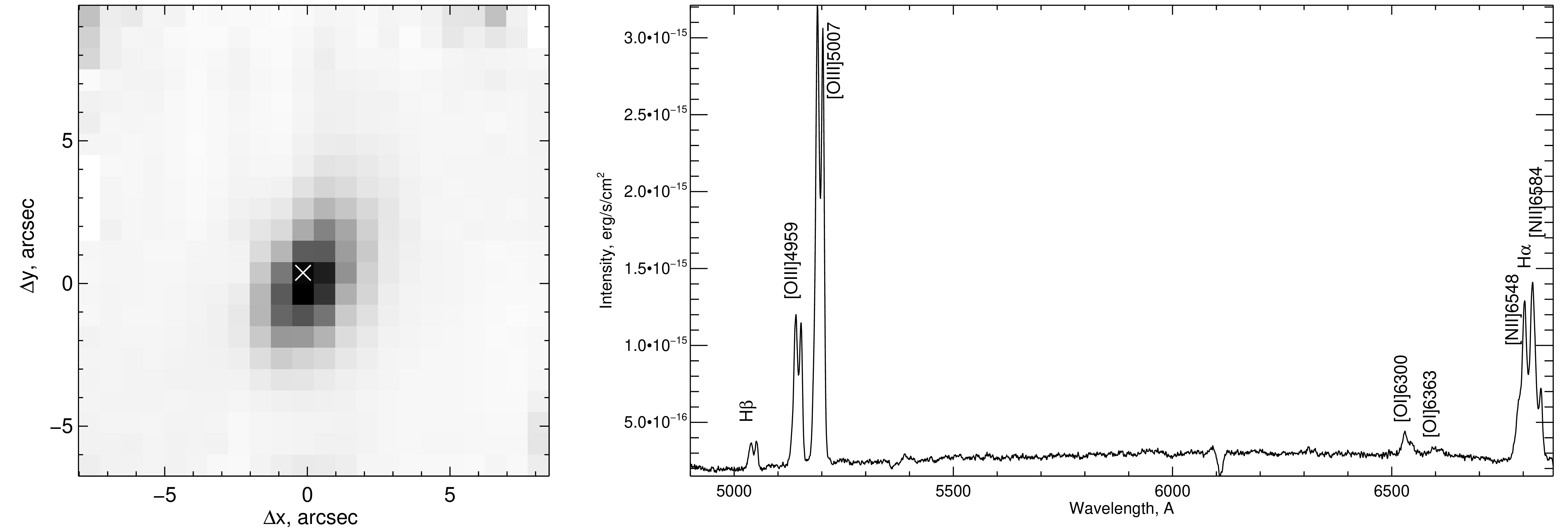
Continuum image of Mrk78 and the spectrum of its central part obtained with IFU SCORPIO-2 using the VPHG940@600 grism.
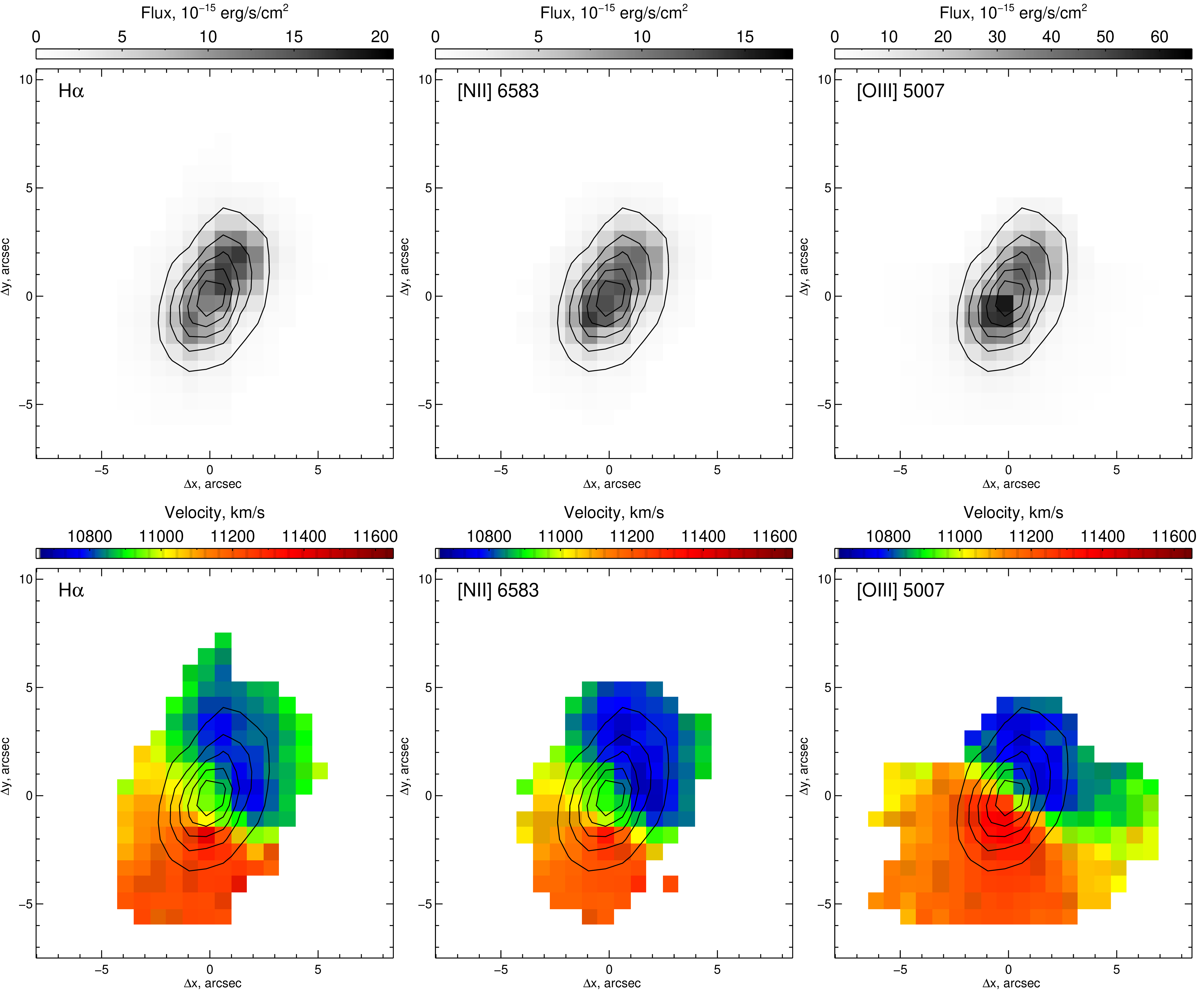
Images of Mrk78 in emission lines and velocity fields obtained with IFU SCORPIO-2 using the VPHG940@600 grism.
This work was supported my the grant of Russian Science Foundation 17-12-01335 "Ionized gas in galaxy disks and beyond the optical radius".